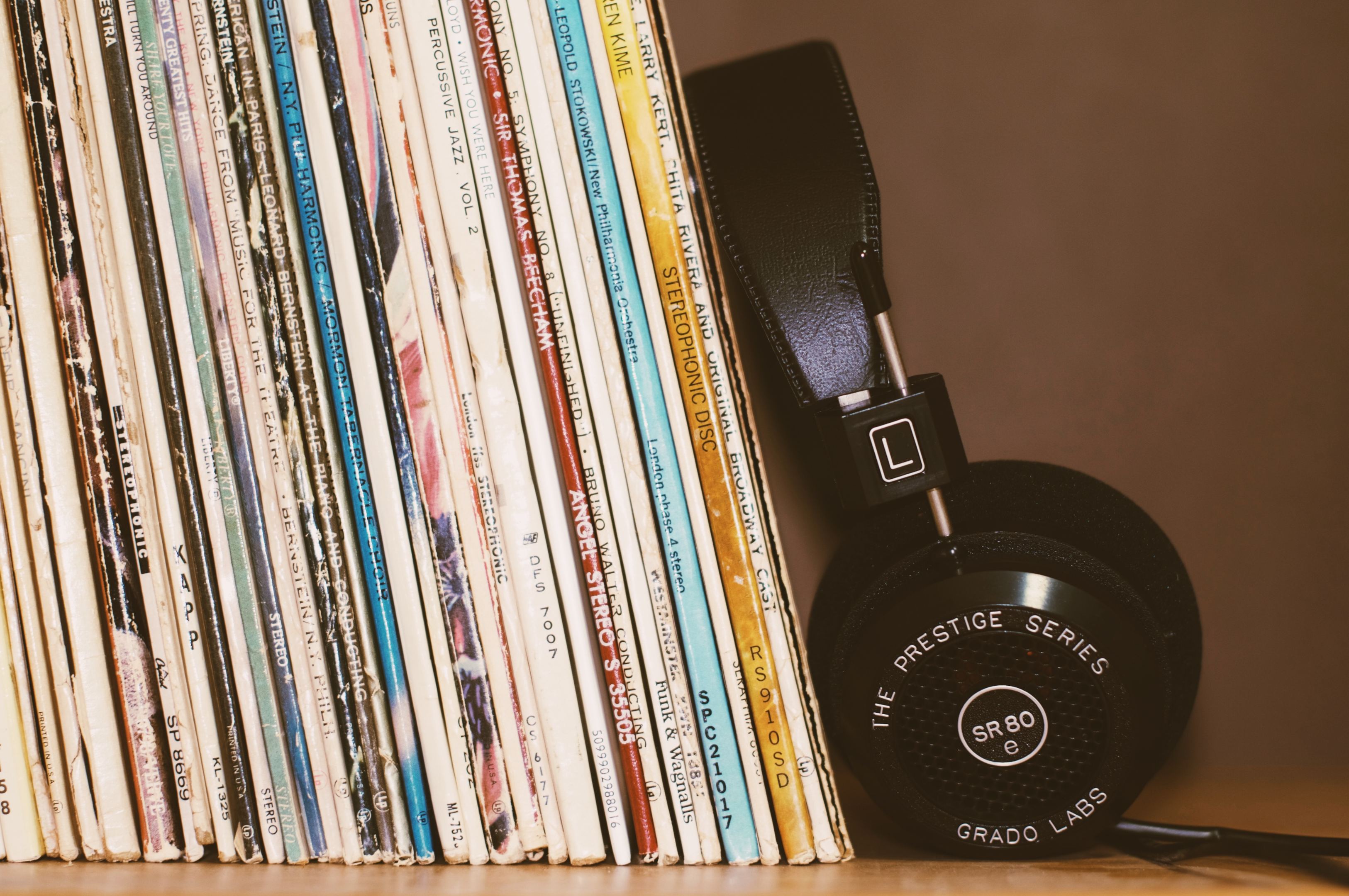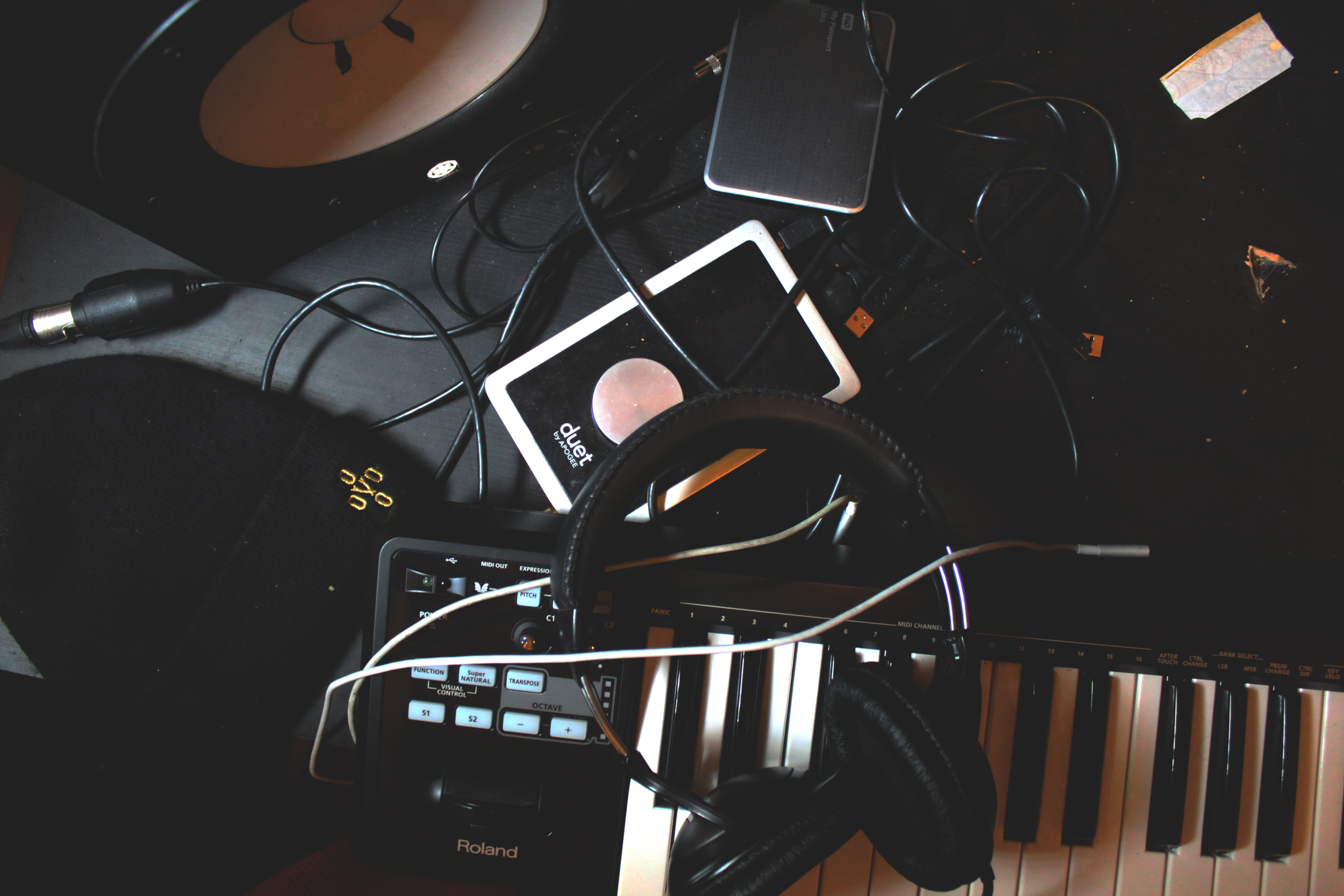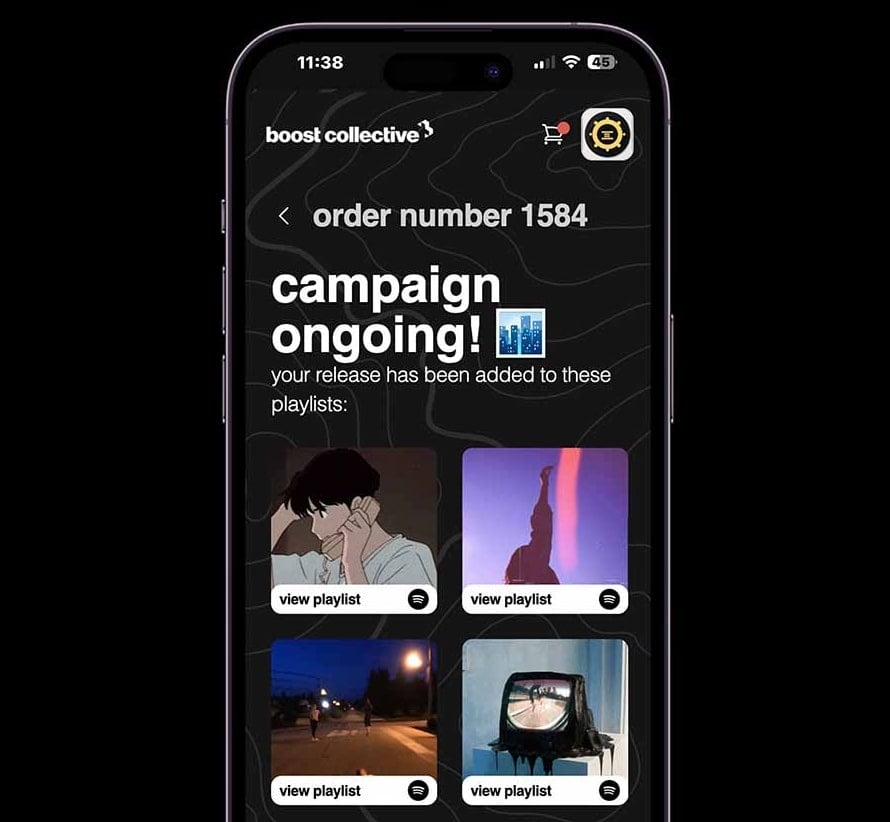Overview

Are you struggling to get your own music played out to the masses?
In today's digital age, it can be challenging to stand out in a crowded music scene. However, with the right approach and strategies, you can maximize your music and digital distribution efforts and gain more exposure.
Introduction
Music distribution has evolved significantly over the years.
With the rise of streaming services and social media, musicians now have more opportunities than ever before to reach their audience.
However, navigating these platforms can be overwhelming and confusing for those new to the industry.
To achieve success in the music industry, it is crucial to have a well-planned music distribution strategy.
Whether you are an independent artist or part of a label, there are several tips and tricks to help you get your music heard by a wider audience.
In this feature, we will explore some of the best ways to maximize your music and digital distribution service and efforts and get your music out to the masses.
What Is Music Distribution?

The Basics
Music distribution refers to the process of making music available to the public through various channels such as streaming services, physical copies of media, and digital downloads.
The distribution process typically involves the following steps:
-
Recording and production of the music: This involves the actual creation of the music, either by the artist or a producer.
-
Licensing: The music must be licensed by the artist or rights holder to allow it to be distributed.
-
Distribution: The music is distributed to various platforms such as streaming services, online music stores, and physical retailers.
-
Promotion: The music is marketed and promoted to the public through various channels such as social media, radio, and live performances.
The goal of most distributors of music distribution is to make the music available to as many people as possible and to generate revenue for the artist or rights holder.
Music distribution services have evolved greatly over the years, with the rise of digital streaming services and online music stores transforming the industry.
Steps Involved In Music Distribution
Music distribution refers to the process of getting music from the artist to the listener or consumer. Here are the typical steps involved in music and digital distribution services:
-
Recording And Mastering: The first step is creating the music itself. This involves recording and mastering the audio, which can be done in a recording studio or at home with a computer and software.
-
Choosing A Distributor: After the music is recorded and mastered, the artist or label must choose a distributor to get their music out into the world. There are many distributors to choose from, including major labels, independent distributors, and digital distributors.
-
Preparing The Music Files: The next step is preparing the music files for distribution. This involves creating digital audio files, such as MP3s, and providing the necessary metadata, such as track titles and artist names.
-
Uploading The Music: Once the music files are prepared, they can be uploaded to the distributor's platform. This can be done through a web interface or through software provided by the distributor.
-
Distributor Review: The distributor will then review the music to ensure that it meets their technical and content guidelines. If there are any issues, the artist or label will be notified and given a chance to correct them.
-
Distribution: Once the music is approved, the distributor will distribute it to online music stores and streaming platforms, such as iTunes, Spotify, and Amazon Music.
-
Marketing And Promotion: Finally, the artist or label will need to market and promote the music to reach listeners. This can involve creating social media posts, running ads, and engaging with fans and influencers.
Overall, music distribution involves several steps, from the music distributors' recording and mastering the music to promoting it to listeners.
By following these steps, independent artists, and labels can get their music out into the world and reach a wider audience.
Know Your Audience
Define Your Target Audience
Defining your target audience in music is crucial for several reasons. First and foremost, it allows you to create music that resonates with your intended audience.
By understanding their preferences, interests, and lifestyles, you can tailor your lyrics, melody, and overall style to appeal to them. This can help you build a loyal following and increase your chances of success.
Additionally, defining your target audience can help you market and promote your own music videos effectively.
If you know who your audience is, you can target your advertising efforts to reach them where they are (e.g. social media, music blogs, etc.).
This can save you time and money, and increase the likelihood of converting potential fans into actual fans.
Finally, defining your target audience can help you stand out in a crowded music industry.
By focusing your music distribution service on a specific niche or demographic, you can differentiate yourself from other artists and create a unique brand identity.
This can help you build a stronger connection with your audience and ultimately lead to greater success in your music career.
Understand Their Listening Habits And Preferences

Understanding your audience's listening habits and preferences can bring several benefits to your communication, marketing, or content strategy.
Here are some of them:
-
Tailoring Your Message: By knowing what kind of content your audience prefers, you can create content that resonates with them, making it more likely that they will engage with it. For instance, if you know that your audience likes podcasts on a particular topic, you can create a podcast on that subject that will capture their attention.
-
Delivering The Right Message At The Right Time: Understanding your audience's listening habits can help you deliver your message when they are most likely to engage with it. For instance, if you know that your audience listens to podcasts during their morning commute, you can schedule your podcast to be released at that time.
-
Increasing Engagement: By creating content that speaks directly to your audience's interests and preferences, you increase the likelihood that they will engage with it. This can lead to more shares, comments, and likes, which can help to amplify your message.
-
Building Trust: When you create content that resonates with your audience, it can help to build trust and credibility with them. They are more likely to see you as an authority on the subject and be more receptive to your message.
-
Improving ROI: By tailoring your content to your audience's preferences and listening habits, you can increase the ROI of your marketing efforts. You will be able to target your messaging more effectively and convert more leads into customers.
Overall, understanding your audience's listening habits and preferences can help you to create more effective and engaging content that will resonate with them, increase their engagement, build trust, and ultimately, help you achieve your business goals.
Optimize Your Metadata
What Is Metadata?
Music metadata refers to the descriptive information that accompanies a music file or recording.
This information can include details about the artist, song title, album, track number, genre, year, release date, and more.
Why Is Metadata Important?
Music metadata is essential for organizing and categorizing music collections.
It also helps music listeners discover new music through recommendations based on similar genres, artists, or albums.
Additionally, music metadata is used by music streaming services to enable search and playlist creation.
Some common metadata standards used in the music industry include ID3 tags, which are embedded in digital music files, and MusicBrainz, a community-driven open music encyclopedia that collects and shares metadata about music.
The Importance Of Accurate And Complete Metadata
Metadata is crucial for managing and organizing music collections in a digital age. It refers to the information associated with a piece of music, including artist, title, album, year, genre, and more. Accurate and complete metadata is essential for music lovers, streaming music distribution services, and music businesses for several reasons:
-
Discoverability: Accurate and complete metadata makes it easier for music lovers to discover new music. When metadata is incorrect or incomplete, it can be challenging for music lovers to find the right music to match their preferences.
-
Copyright Protection: Metadata helps music businesses protect the copyright of music by identifying the owner of the rights. It helps in royalty distribution and payment.
-
User Experience: Accurate and complete metadata is essential for providing an enjoyable user experience. Incomplete or incorrect metadata can lead to confusion, which can negatively impact user engagement.
-
Marketing: Metadata plays a significant role in marketing music. It enables artists and labels to promote their music effectively on various platforms. Metadata can help to categorize music, target specific audiences, and promote music to new listeners.
-
Data Analysis: Metadata plays a crucial role in data analysis. Music businesses can use metadata to analyze trends in music consumption and identify popular genres, which can help inform business decisions.
In conclusion, accurate and complete metadata is essential for the music industry. It improves discoverability, copyright protection, user experience, marketing, and data analysis.
Therefore, music businesses and platforms need to prioritize metadata accuracy and completeness.
Tips For Optimizing Your Metadata
-
Be Consistent: Use a consistent format for your metadata across all your music tracks. Use the same spelling and punctuation for your artist, album, and track titles. This makes it easier for music databases and search engines to categorize your music.
-
Use Descriptive And Unique Information: Add as much information as possible to your metadata. This includes things like genre, year of release, composer, producer, and label. Make sure to use unique and descriptive information that accurately represents your music.
-
Pay Attention To The Order: The order of the metadata is important. The typical order is Artist, Album, Track Number, Track Title, and then any additional information like genre or year. Stick to this format to ensure consistency.
-
Use Standard Naming Conventions: Make sure your music file names and metadata follow standard naming conventions. This helps ensure your music is properly categorized and identified by music databases and players.
-
Check For Errors: Always double-check your metadata for errors, misspellings, or inconsistencies. This ensures your music is accurately represented and easily discoverable by listeners.
-
Keep Metadata Up-To-Date: Make sure to update your metadata whenever you release new music or make changes to existing music. This keeps your music properly categorized and helps prevent confusion for listeners.
-
Utilize Tools: There are many tools available that can help you optimize your music metadata. These tools can automatically add missing information, update metadata, and help you adhere to naming conventions. Use these tools to save time and ensure accuracy.
Leverage Your Social Media Presence

Social media is a powerful tool when it comes to promoting your music.
Here are a few ways it can help:
1. Reach A Wider Audience: Social media platforms like Facebook, Instagram, and Twitter allow you to reach a large number of people in a short amount of time. This is great for getting your music in front of new listeners who may not have heard it before.
2. Build A Following: By consistently posting updates, behind-the-scenes photos, and other content, you can build a community of fans who are interested in your music. This can help with engagement and ultimately lead to more streams and sales.
3. Collaborate With Other Artists: Social media makes it easy to connect with other musicians and collaborate on projects together. By working with other artists, you can expand your reach and gain exposure to their fans as well.
4. Advertise Your Music: Social media advertising is an affordable way to target specific audiences who may be interested in your music. By using targeted ads, you can promote your music to people who are more likely to listen and engage with it.
Utilize Music Promotion Services
Music promotion services can be a great way to increase exposure for your music and reach a wider audience. Here are some tips for utilizing music promotion services effectively:
-
Research Different Music Promotion Services: There are many music promotion services available, so it's important to research and compare different options to find the one that best suits your needs and budget.
-
Set Clear Goals: Before utilizing a music promotion service, it's important to set clear goals for what you hope to achieve. This can help you choose the right service and ensure that you're getting the most out of your investment.
-
Use Social Media: Social media can be a powerful tool for promoting your music, and many music promotion services will use social media platforms to help promote your music to their followers.
-
Leverage Fan Engagement: Encourage your fans to engage with your music and share it with their friends and followers. This can help increase exposure and generate buzz around your music.
-
Monitor Your Results: Keep track of your results and analytics to see how your music is performing and make adjustments as needed. This can help you refine your approach and get better results over time.
Overall, music promotion services can be a great way to increase exposure for your music and reach a wider audience.
Collaborate With Other Artists

Collaborating with other music artists can be a great way to expand your audience, gain new perspectives, and create unique and exciting music. Here are some tips for collaborating with other musicians:
-
Find Artists Whose Style Complements Yours: Look for artists who share your musical sensibilities and whose sound would complement yours. This will make it easier to create a cohesive piece of music that showcases both of your strengths.
-
Set Clear Goals And Expectations: Before you start working together, discuss your goals for the collaboration and what you hope to achieve. Set clear expectations for deadlines, communication, and the overall direction of the project.
-
Be Open To New Ideas: Collaboration is all about exploring new ideas and approaches. Be open to suggestions from your collaborator and don't be afraid to try something new.
-
Communicate Effectively: Communication is key in any collaboration. Make sure you both have a clear understanding of what each other is trying to accomplish and don't be afraid to speak up if you have concerns or questions.
-
Be Flexible: Collaboration is a give-and-take process. Be prepared to compromise and be flexible as you work through the project together.
-
Respect Each Other's Creative Vision: Remember that both of you are artists with your own unique perspectives. Be respectful of each other's creative vision and try to find ways to incorporate both of your ideas into the final product.
Overall, collaboration can be a rewarding experience for musicians.
By following these tips, you can create something truly unique and special when releasing music together with another artist.
The Wrap Up
Maximizing your music distribution efforts takes time, effort, and strategy.
By choosing the right music distributor now, promoting your music on social media, collaborating with music bloggers and influencers, performing live, and offering exclusive content to your fans, you can reach a wider audience and grow your fan base.
Keep experimenting with different strategies to see what works for you and your music.
Get your music on playlists now.
It’s time you get your exposure and listeners up - playlisting by Boost Collective has been trusted by 50,000+ artists worldwide.
It’s easy: Search your song, get on playlists, and track your campaign.
What’re you waiting for? Tap in - and get added to playlists in 24 hours.
Join Boost Collective for free here.

